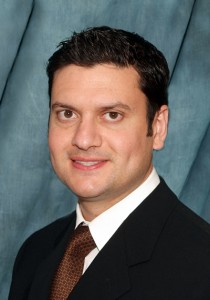
Message from your doctor…
Whether you or one of your family members or friends is considering a hip endoscopy, or are scheduled for surgery, I understand this can be a stressful time. You may have forgotten some of the information we discussed during our last visit, or forgot to ask me a specific question about what to expect. This site is designed to help us stay connected, and to answer some of the most common questions patients ask me about hip arthroscopy.
I want to make sure that both you and your family members have timely information at your fingertips during the days, weeks, and months following your surgery…so you can get back to enjoying the activities you love.
MOST COMMON QUESTIONS
When can I put full weight on my leg?
You will be given crutches for comfort. You may put full weight on the operative hip immediately after surgery as you have no weight bearing or motion restrictions.
When can I go back to work?
This depends on the nature of your job. If you have a desk job or can work from home, you may be able to do computer/phone work within 1 week of surgery.
If you have a labor-intense job, or job that requires heavy lifting/repetitive bending, you may need to be off work for months. Some employers allow light-duty, and we can give you work restriction notes at each post operative visit if necessary.
SPORTS SPECIFICS
We know you are eager to return to your sports and hobbies. We want to guide you safely through that process. Please use the following as a guide.
SWIMMING
Once incisions are well healed (around 3-4 weeks) you may swim as tolerated
BASKETBALL
1-2 months post-op: Jogging and sports drills as tolerated
3 months: Typically no restrictions for sports, if everything has progressed well
FOOTBALL
1-2 months post-op: Jogging and sports drills as tolerated
3 months: Typically no restrictions for sports, if everything has progressed well
SOCCER
1-2 months post-op: Jogging and sports drills as tolerated
3 months: Typically no restrictions for sports, if everything has progressed well
WRESTLING
1-2 months post-op: Jogging and sports drills as tolerated
3 months: Typically no restrictions for sports, if everything has progressed well
HOCKEY
1-2 months post-op: Jogging and sports drills as tolerated
3 months: Typically no restrictions for sports, if everything has progressed well
BASEBALL/SOFTBALL
1-2 months post-op: Jogging and sports drills as tolerated
3 months: Typically no restrictions for sports, if everything has progressed well
GOLF
1-2 weeks post op: May resume golf whenever you are comfortable. Start with putting/chipping and progress to irons/driver as tolerated



